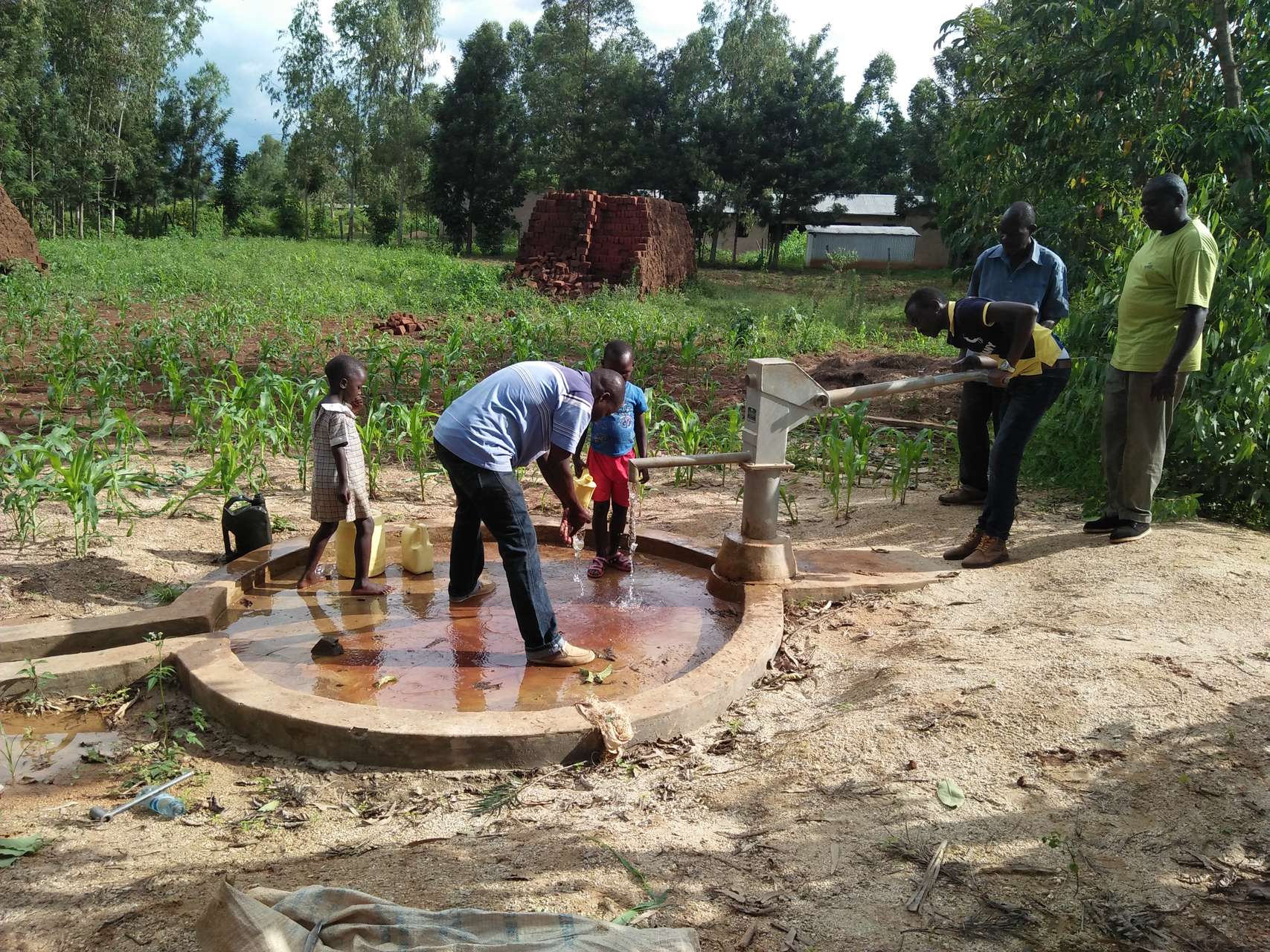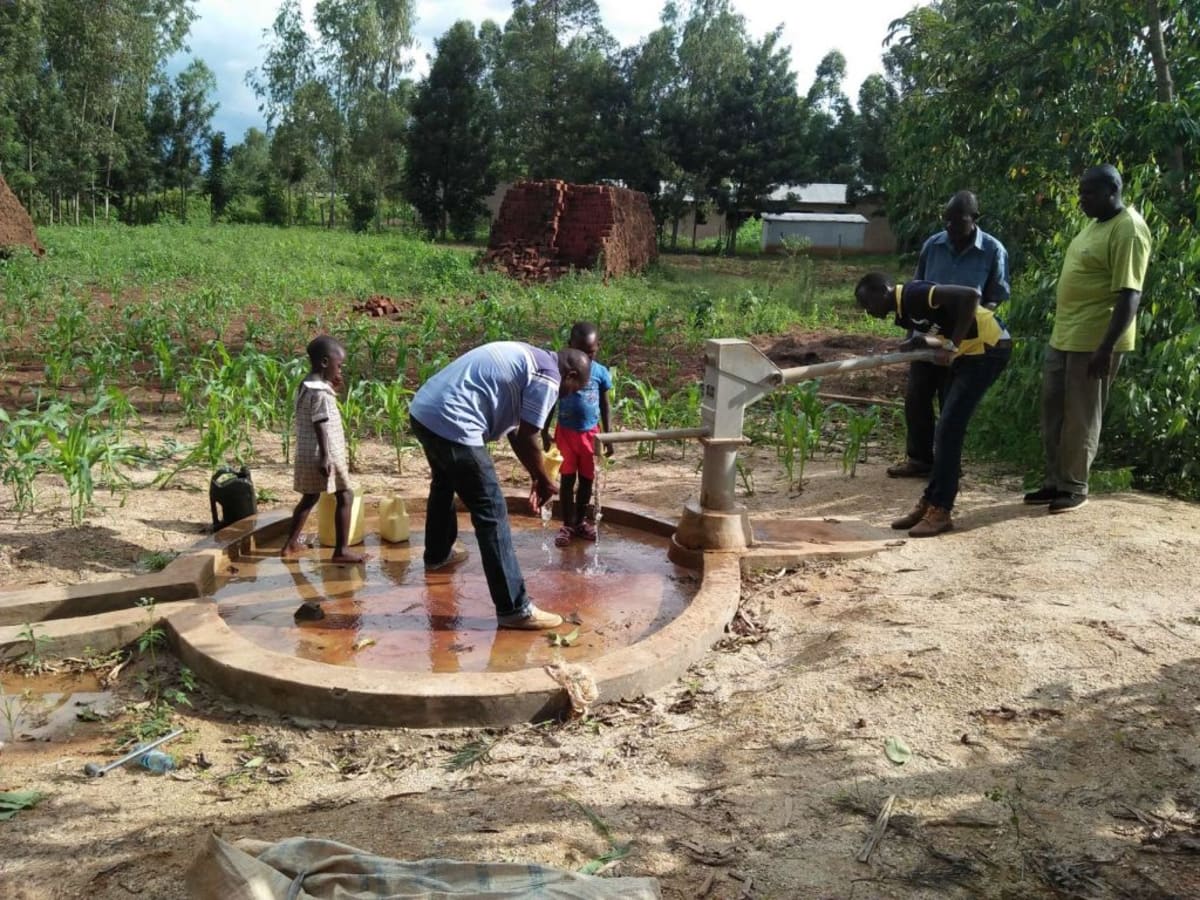This project is a part of our shared program with Safe Water, Sanitation, and Hygiene Initiative (SAWASHI) of Kenya. Our team is pleased to directly share the below report (edited for clarity, as needed).
Welcome to the Community
Early in the morning, men and women wake up to do their daily chores while their children who are at least six-years-old prepare to go to school. At the time of our visit, every single adult was away from home, gone to their small farms to prepare their land for planting. During this time, it is difficult to gather people together since everyone is so busy on their farms. Farming activities begin as early as 6am and go until noon, when women go back home to prepare lunch for their children who are sent out of school to find food. Men then transition to feeding their livestock like cattle, sheep and goats.
For most of the people from this community, agriculture is the main source of income. Only a few young people have moved away for white collar jobs.
A majority of the people in Eshitowa speak Wanga, even the women who came from other tribes to marry into this community. The majority of community members are Christians, while the rest are Muslims. There are two mosques and four churches for them to attend.
Children help their parents on weekends by doing chores. For example, boys help their fathers look after the livestock, while girls help their mothers by fetching water, collecting firewood, cooking, farming, washing clothes and cleaning.
There are over 1,000 people living in this area.
(Editor's Note: While this many people may have access on any given day, realistically a single water source can only support a population of 350-500 people. This community would be a good candidate for a second project in the future so adequate water is available. To learn more, click here.)
Water Situation
Women, having a responsibility of ensuring that water is available in the house, have a heavy burden to carry. On requesting them to take us to their current water source, one man cried out and said "You people from town will not make it on foot! You rather use the vehicle to reach the place." We therefore decided to use our vehicle to drive there with some local women. It took us at least 30 minutes, with us having to leave the vehicle a ways away because the road was so uneven.
When we got there, more than 10 women were already in line waiting to fetch water from a protected spring which only discharges drops of water at a time. It takes approximately 10 to 15 minutes to fill an 20-liter container. Because some women had been waiting in line since the morning hours, they would not allow us new arrivals to fetch water until they were finished. We had to wait for more than one and a half hours to fill our own container. It was heartbreaking to see old women who struggled to go up and down hills with their containers of water. People here don't have vehicles and must always make the walk on foot.
While we took our time to talk to the women at the spring, most of them complained of the distance to the stream which is four kilometers, which equals time and energy wasted - not to mention the hours spent waiting once there. Pregnant women have suffered miscarriages due to the burden of carrying water from this spring, and children risk their safety walking so far along the road.
There's no doubt the water is contaminated, whether at the spring itself or during the long journey home. There are latrines built nearby this spring. After drinking this water, community members often get diarrhea and are diagnoses with typhoid.
There are other locations where water has pooled to the surface, and you'll find many people stop to fill their containers with dirty water to avoid a longer walk.
Sanitation Situation
Over 75% of households have a pit latrine. The most common latrine is made of mud and stick walls and an iron sheet roof. Sugar sacks hang in the doorway for privacy.
We found out that another program came in and taught everyone how to build hand-washing stations, but these weren't maintained because of water scarcity. However, most households have and use other helpful tools like dish racks and clotheslines.
65-year-old Nelson Sumba said, "Most people in this village do not wash hands after visiting the toilet. Common diseases in this community include malaria, typhoid, diarrhea and skin diseases. Sometimes children skip school because of stomach ailments. Recently, my daughter suffered from diarrhea and she missed school for a whole week."
Plans: Hygiene and Sanitation Training
Hygiene and sanitation training will be held with community members for three days.
We will cover the topics below and many more:
– Proper hand-washing
– Water-handling and storage
– Food preparation and storage
– Water treatment methods
– Preventing waterborne diseases (specifically diarrhea and typhoid)
– Developing positive attitudes about hygiene and sanitation
Our trainers will use posters that illustrate both good and bad hygiene practices. Group discussions, role plays, and demonstrations will keep everyone involved with the important information they’re learning.
On the third day of training, we will focus on strengthening a water user committee to properly manage and maintain the new well. The committee will draft rules for proper behavior around the water point and will also ensure that community members contribute a fee to be saved for any future repairs. If they encounter any problems, they are to contact the SAWASHI head office. And in the meantime, we will continue to visit Eshitowa Community and their new well.
Plans: New Borehole
This borehole is an exciting opportunity for The Water Project and its partners. We have been undertaking a rigorous vetting of drillers to find the best team and drill rig. We will also be receiving a shipment of LifePumps, a newly developed stainless steel pump for deep borehole wells. This pump has less moving parts, so we envision easier maintenance and more uptime. But until then, we'll install an AfriDev pump so community members can have immediate access to clean water.
The community first proposed a very central location for the borehole. However, a hydrogeologist ran five different tests and found that the only suitable location is on one edge of Eshitowa. Still, the community members are happy to have an approved location, and have since donated that land for the borehole.

 Borehole Well and Hand Pump
Borehole Well and Hand Pump
 Rehabilitation Project
Rehabilitation Project



























